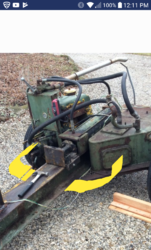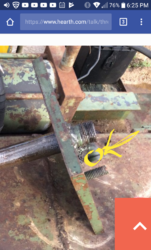kevin, that's one crazy story. Sounds like some of the things my brother used to be involved with (he worked for Brookville locomotive in PA).
Yep, the capped nipple at the rear of the tank is the fill for the gasoline (the tank is divided into two compartments).
I will have some free time this morning to dig into some of these issues. First, check for the presence of water in the tank and remove if needed. Second, check/clean the strainer. Third, try operating the splitter with the "vent" plug open to test for the vacuum condition.
And I'll try to take pictures along the way.
Yep, the capped nipple at the rear of the tank is the fill for the gasoline (the tank is divided into two compartments).
I will have some free time this morning to dig into some of these issues. First, check for the presence of water in the tank and remove if needed. Second, check/clean the strainer. Third, try operating the splitter with the "vent" plug open to test for the vacuum condition.
And I'll try to take pictures along the way.



